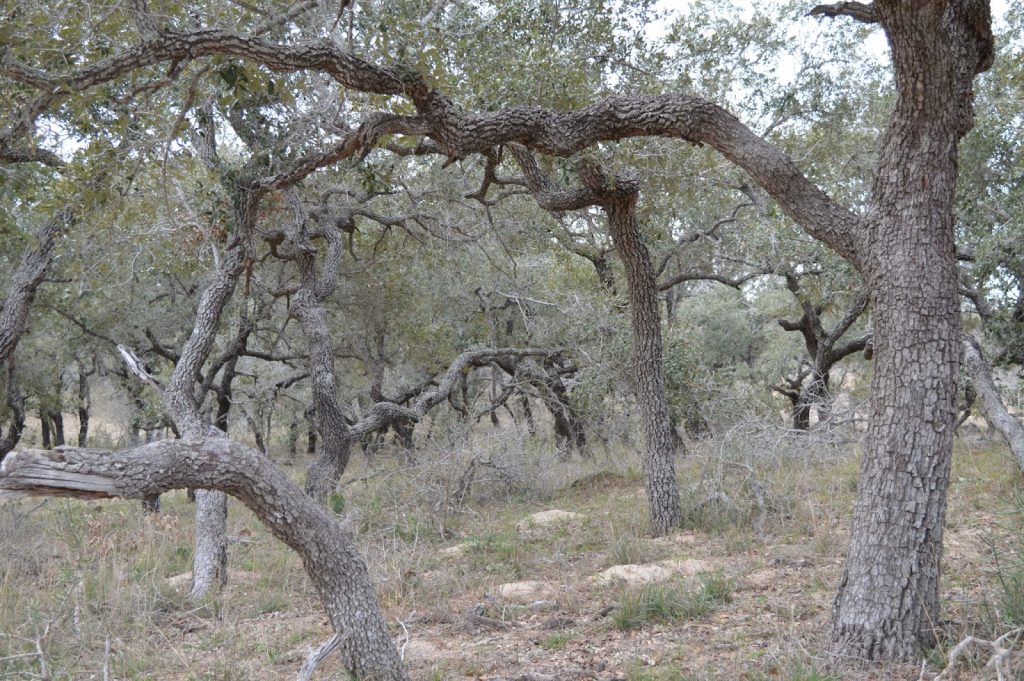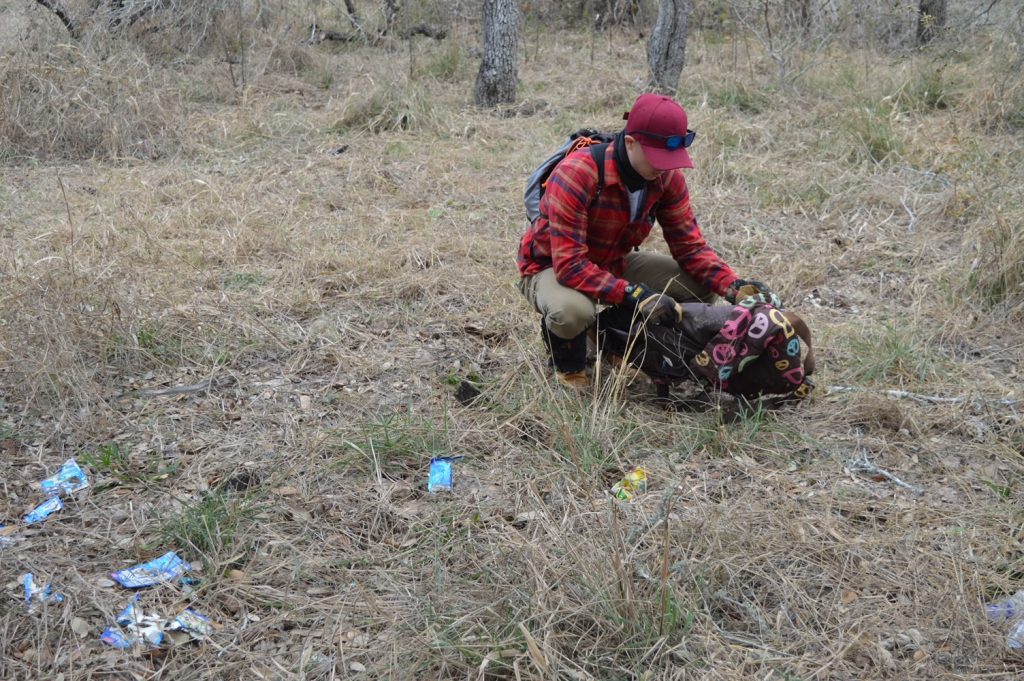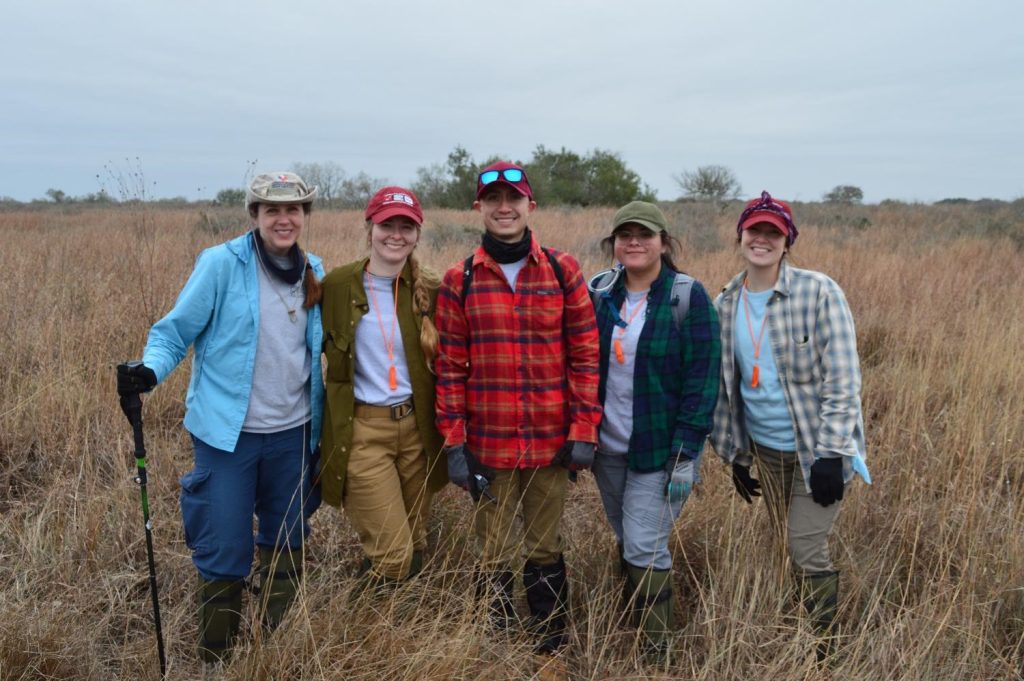The mornings usually start off the same: we wake up, get our gear ready, chug vitamin C packets and have some sort of breakfast. Today, it was gas station tacos. Sure when I type it out they might not sound the most appealing but do not knock it until you try them. They are surprisingly delicious, with homemade tortillas, and very filling so thank you Stripes (Laredo Taco Company) for providing them. Deputy Don White and Melissa met us to have a brief meeting on our plans for the day, which was to search a specific pasture on a ranch where a migrant went missing several years ago. This area was their last known location and had been searched by our team extensively previously. But there has been no success in locating and recovering the missing individual. Recently Don learned the pasture extended further south than our original search and suggested we go back to extend the search. I have learned that several challenges exist when working search, rescue, and recovery in South Texas. Optimally rescue/ recovery personnel are given GPS coordinates to get to the last known location a distressed migrant was located, but there are instances when coordinates are not available and all they are given are brief descriptions of the surrounding area. These descriptions usually consist of “landmarks” such as water pumps, oil pipelines, pasture names, etc. that are similar within and throughout several ranches. I cannot stress enough how everything looks the same and how this truly does not narrow locations down. It is comparable to searching for a needle in haystack… except the haystack is actually dangerous and consists of pointy thickets and brush. Don moved me when he described that this particular case was “unfinished business” to him. His persistence has not allowed for him to give up on finding this individual even though several years have passed. He wants to bring some sort of closure/ peace for the family in the form of returning their loved one.

Line searches can actually be quite difficult and require lots of practice to execute correctly. It seems simple at first glance, but people fail to recognize the amount of things that are going on all at once. For instances, we as a team have to make sure to be in straight line AND keep the same (slow) pace with those around us. This, I have learned, is hard to accomplish in the Texas terrain as hills exist or the particular path that I am walking might have thicker brush to get through than my teammate. There are also spiderwebs and pencil cacti that like to snag clothing and skin (so much pain) to watch out for. All examples that will naturally slow the flow of the line search. At the same time, we have to continuously look at our wrist compass to ensure that we maintain the same direction. All while sticking to the main goal of scanning the ground for clues that might give us insight of migrant travel or remains themselves. Multitasking at its finest!!!

Today was different though, on top of all the physical obstacles mentioned above, there were mental barriers that I was trying to fight off. At one point I remember feeling overwhelmed and ultimately discouraged because I kept thinking about how looking for remains truly is like looking for a needle in a haystack. The areas we are searching within span thousands of acres meaning that individuals can be anywhere (tis one pasture alone is 1500 acres). To overcome this, I decided to focus on the importance of covering ground, no matter what the amount is. We can mentally check off a certain section of the ranch as not containing remains or physical evidence that can add to an identification. A sort of “no stone goes unturned” attitude provided relief.
We are looking for signs of life, anything to indicate that there was migrant activity in the area we are searching and today we found a lot of material things. To a random bystander it might seem like piles of trash but these encampments hold such much information. We have been taught to look at labels to find the expiration date of food to gauge how recent they may have been left behind.
Any time we find backpacks or clothing we are instructed to look through the pockets to see if we can find any sort of identification that might prove to be useful in the future if this person had been reported missing.

I have to thank Don for most of the things that I have learned and picked up in the field. He is so eager to teach the team anything that he knows about the Texas terrain (examples include leaf cutter ants and their mounds, caustic beetles, deer breeding grounds, the list goes on…) or about what to look for in migrant movement patterns. I am in the works of trying to convince him to start a YouTube series called “The more you know *10 second pause* with Don” where he would discuss all of his knowledge. Today he taught me the importance of a black trash bag which I know refer to as the multitool of plastics. He explained that for migrants this can serve as a poncho for rain, as a cover from sun, ground sheet to sit on, tent/ tarp and in a worst case scenario can serve as an insulation blanket under sand.
We covered roughly four miles, took a lunch break and decided to switch gears to help Eddie refill water stations. Water stations, for those that might be new to the blog, are big barrels that hold several jugs of 1 gallon waters for migrants to take as they make their journey to their final destination. Fresh, clean water can be a life saver especially during times of extreme heat and humidity. These water stations are placed along paths that are suspected to be highly traveled by migrants. It was neat showing up to water stations and finding that there were one to zero waters in the barrel left, an indicator that they are being used. I rode with Eddie in his truck which was nice because we got to joke around and jam to Carlos Santana.

One of the first things we did as a team when we got back to the hotel was inventory all of the cool animal bones we found in the field while searching. I really do not know how we will get through TSA with the amount of bones we have collected but the challenge has been accepted. It is so awesome (sauce) being friends with nerds who enjoy bones as much as I do.
